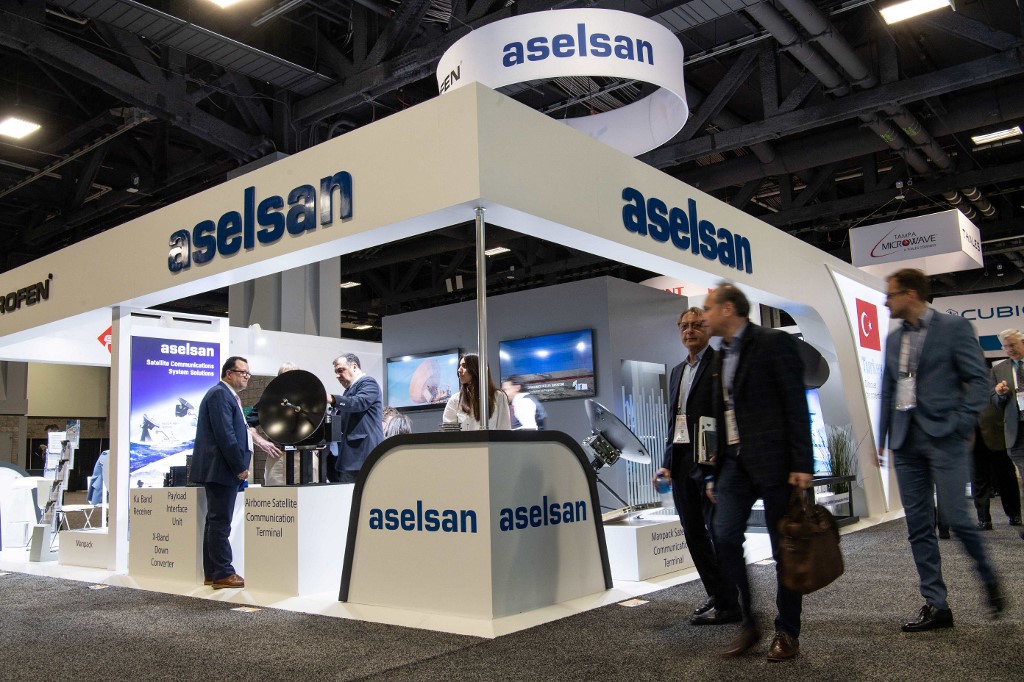The NATO Support and Procurement Agency (NSPA) has awarded outline agreements to five defense companies including Turkish defense contractor ASELSAN for concept studies and technical services as part of a multinational effort to develop a modular, scalable ground-based air defense system, according to a statement from the NSPA.
The other companies are French contractors Airbus Defence and Space and Thales LAS as well as Lockheed Martin UK and the US-based Raytheon.
Each firm brings complementary capabilities: Airbus and Thales specialize in European missile systems; Raytheon and Lockheed Martin offer US air defense technology; and ASELSAN provides emerging systems tailored to NATO standards, according to the statement.
The project is intended to counter a range of aerial and missile threats at very short to medium range through a flexible and integrated ground-based air defense, or GBAD, system.
The initiative has been designated a NATO High Visibility Project, a status reserved for large-scale, high-priority multinational efforts aimed at significantly enhancing the alliance’s operational capabilities.
It is led by the NSPA on behalf of 11 NATO member states: Denmark, Germany, Greece, Hungary, Italy, the Netherlands, Norway, Romania, Slovenia, Spain and the United Kingdom.
A key objective of the Modular GBAD initiative is to improve interoperability among member states, which currently operate a mix of national air defense systems that are often incompatible during joint operations. These include the Patriot (a US-made long-range missile defense system), SAMP/T (a Franco-Italian medium-range system), IRIS-T (a German-led short-range system) and Turkey’s domestically developed HISAR and SIPER platforms.
To address this issue, the project seeks to establish a common architectural framework that would enable seamless coordination and integration during multinational deployments.
According to NSPA, the five selected contractors will begin work immediately on Concept Study 1, or CS1, which will focus on system architecture. This phase will produce the architectural blueprint for future development.
The CS1 deliverables are expected by mid-September 2025. Based on those results, the most promising concepts will advance to Concept Study 2, which will address modularity, followed by Concept Study 3, focused on integrating emerging technologies.
NSPA said awarding Concept Study 1 through multiple outline agreements represents “a successful example of the effective governance of all Modular GBAD support partnership nations.” The agency added, “This milestone reaffirms NSPA’s commitment to professionalism, operational efficiency and customer satisfaction,” positioning itself as “the premier choice for multinational defense acquisition across the alliance.”
Defense analysts say ASELSAN’s inclusion in the project along with established global firms such as Airbus, Lockheed Martin, Raytheon and Thales is important. ASELSAN’s selection reflects growing international recognition of Turkey’s domestic air defense capabilities, following strategic investments made over the past two decades.
The company has developed short, medium and long-range missile systems as well as barrel-based air defense platforms that meet NATO operational standards.
ASELSAN’s HAKIM 100 system, featuring advanced sensor fusion and integrated air picture capabilities, and Turkey’s multilayered “Steel Dome” air defense architecture contributed to the company’s favorable position in NSPA’s evaluation.
Another goal of the Modular GBAD program is to standardize NATO’s air defense approach while maintaining flexibility to accommodate each nation’s specific operational needs. That balance is considered essential for an alliance that spans diverse geographies and faces a wide range of threats.
By participating in the initiative, Turkey is said to gain further technological validation but also positions itself as a strategic contributor in shaping NATO’s future defense architecture, shifting from a technology consumer to a co-developer and innovation partner.

